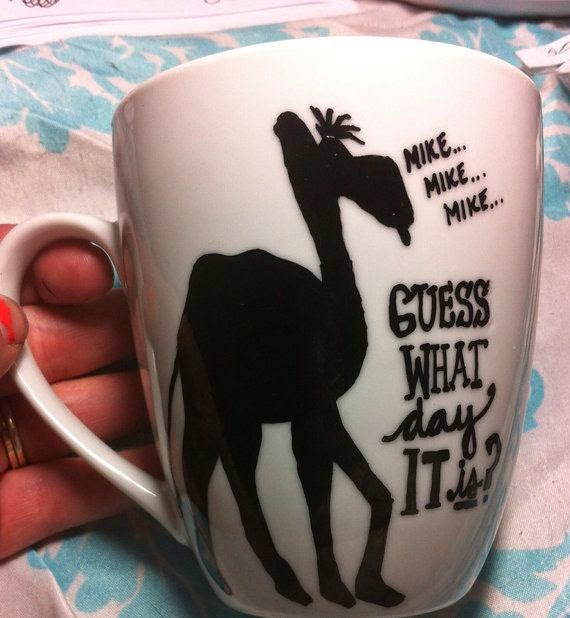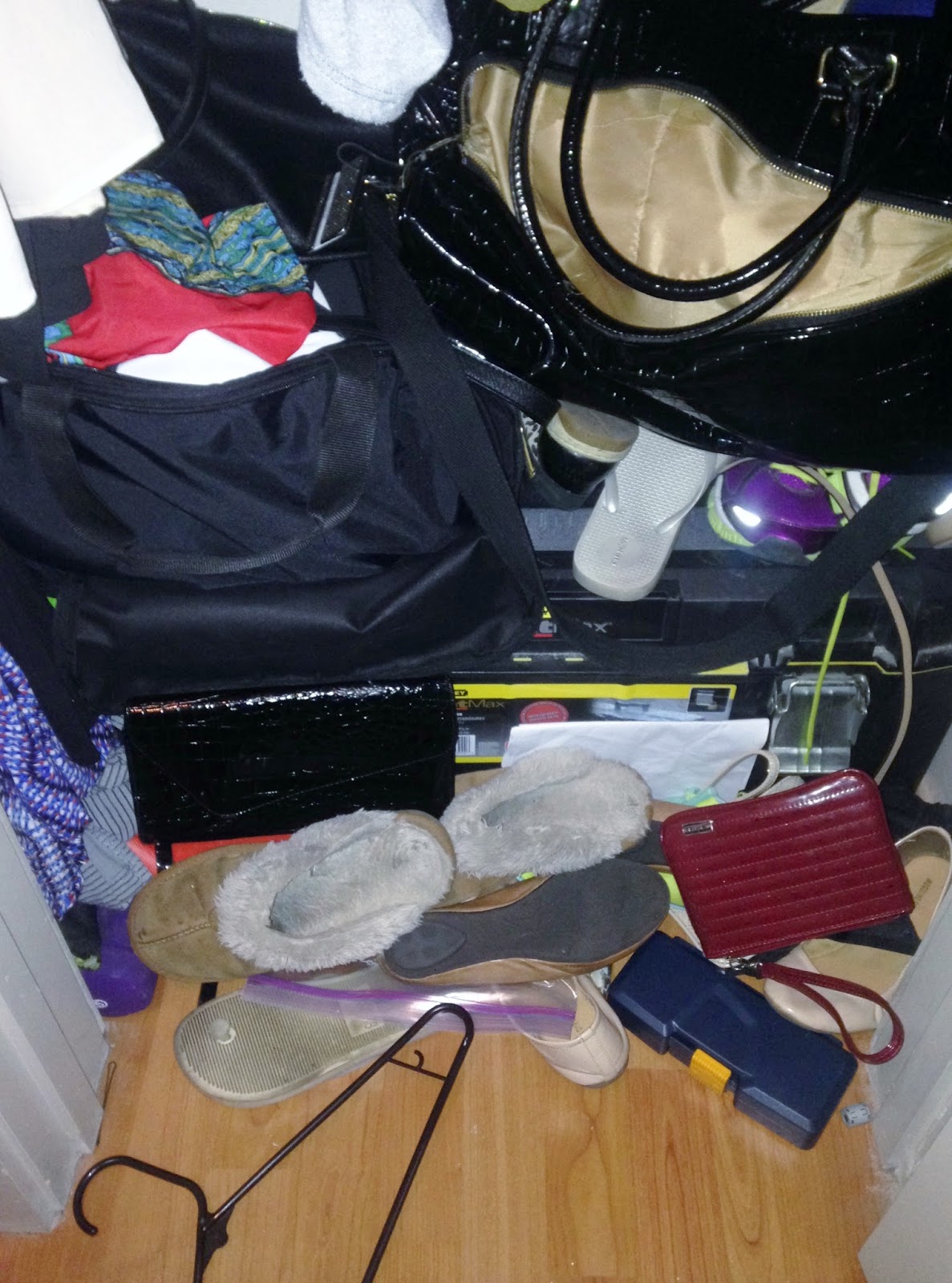I've known for a long time (4 years or so...I'm really good at procrastination) that I wanted to DIY a headboard!! I prefer my bedroom to be dark, elegant and sophisticated, and I've been terrified that it would look cheap. Goal #1: Don't look cheap.
Recently, my interest was sparked again, so I started brainstorming ideas. Being the control freak that I am, I planned at least a dozen different headboards. For anyone planning to make one, these are all thing to consider:
- Upholstered or not?
- If yes, tufted or not?
- If yes, square or diamond patterned?
- Also, how crowded?
- If yes, what upholstery fabric?
- If no, then what?!
- Will a hard surface be exposed?
- Studs?
- Shape
- Squared off
- Rounded
- Alexander? Finsbury? Portman? Eccleston? AHHHHHH....look here.
- Mount to wall? Or to bed frame...
- How tall from the top of the mattress?
I must have looked at a thousand different headboard pictures. I'm not exaggerating even a little bit. Eventually, I found this headboard, which I considered to be nearly perfect.
 |
I can't find the source for this. So so so sorry. Blogging faux-pas #1. Most likely houzz.com
I loved the square tufting and detailed trim work, but knew my budget required cheap trim. |

As far as the design element, I chose (1) upholstered, tufted, in a loose square pattern, (2) with wide, gloss black trim, (3) not studded, (4) squared off, (5) mounted to wall, and (6) tall!!! A great deal of my design decision came from ease...I wanted the hardware store to be able to do most of the cuts! I have a jigsaw, but hoped not to use it. Unfortunately, that was not the case. My apartment kitchen turned into a workshop and I made a big, big mess.
The last consideration was time. I knew I needed to get this done in a weekend or it would take months to complete. I had no desire to spend an entire weekend making this, but luckily I had a four-day weekend for Independence Day!! Most of my family and friends were out of town, so this was the perfect time to take on a project.
I have a queen sized bed, which measures 60" across. I decided my headboard would be 62.5" x 36.5"...though I wish I had been kinder to myself on those measurements. 2-4" wider than the mattress should be sufficient!!
Materials used:
- 1/4" plywood, cut to 55.5" x 29.5"
- 1x4x8, cut to 62.5" (x2) and 29.5" (x2) >>> do yourself a favor and buy the pre-finished/sanded trim work. It's worth the price hike!!
- Wood filler (I like Elmer's because it dries quickly)
- Sandpaper/sander (I use a Black & Decker Mouse Sander), 180 grit sandpaper
- Wood glue (Again, Elmer's)
- Cordless screw driver, screw heads and drill bits
- Black gloss paint >>> I typically prefer Rust-O-Leum, but didn't want to have to deal with the Oil-based paint clean up. I went Valspar this time.
- Paint brushes and clean up
- Upholstery grade staple gun and staples (1/4" so they don't poke through the plywood!!)
- 1/2" foam, +12 inches wider than your headboard
- Batting, +12" wider than your headboard
- Scissors/Utility knife
- Spray adhesive
- Button kit (I used 15 buttons, which was 1 cover button kit and 2 cover button refills)
- Fabric (+12 inches wider than your headboard, extra to make buttons) **
- Scotchgard
- Heavy duty sewing needle
- Washers (same number as buttons)
- Flush wall-mount brackets + hardware
- Drywall Anchors to fit wall-mount bracket hardware
- 4 large L-Brackets
- 8 straight brackets
- Level (24-36")
- Time!! (2 days, minimum)
**The best advice I got came from one of my favorite bloggers, Make It Love It. She recommended using a curtain panel for the fabric!! I would not have been able to afford the fabric I wanted from a website in silk, and would have questioned how it would look, but the curtain panel (polyester, but who cares) was perfect!! (On sale for $17 at Target)
Frame:
The first thing I did was layout, connect, and fill the frame. I decided not to go with a mitered edge (diagonal) because I didn't want to screw up the measurement or have a crooked rectangle. There were only a couple of fill spots on the front of the trim, but I did need to fill the ends. Sand away the filler once it has dried (I'm impatient, 30 minutes was good).
Since I wanted all of my edges to be clean, I first glued the trim ends together, then attached an L-Bracket to each corner. This didn't seem sturdy enough, so I added an additional straight bracket to support.
Once that is done (3 hours later, ugh), I painted the frame with two coats of gloss black. I let it dry overnight!!
Upholstered Insert:
For the upholstered plywood insert, I measured out my button positions first. I started with my center button and worked my way out, 10" apart on all side. Using a 1/8" drill bit, I predrilled the plywood. FYI: Don't drill through the carpet.
Since I was working on already damaged carpet, I placed trash bags underneath the board and applied spray adhesive to the plywood. Be generous. This required proper ventilated, so I opened the patio door (see dog). Then, press down the foam until it is secure. Cut away the excess foam.
Then (I did not wait between layers to let the adhesive dry since it seemed to have a firm hold), spray the foam, place the batting overtop, and press down on the batting until it is secure. Leaving at least 6" of batting on all sides of the plywood will allow you to wrap it around the board. Staple the batting a few times to the underside of the plywood. This doesn't need to be pretty, you'll clean it up later.
Your fabric/curtain panel, at this point, should be cleaned, dried, and ironed (don't leave that out). I placed the wrong-side-up curtain, then the liner to hide all of the green foam, since I had it. Flip the board so the layers are in the correct order (curtain, liner, batting, foam, plywood).
I found it easiest to start stapling the batting/curtain pane at my four centers. Staple the batting, liner, and curtain to the plywood so it is taught. I stapled at least every inch (you
cannot staple too much), about 3 inches from the edge of the plywood. I then removed the batting staples from Round One and trimmed back the batting. Make sure your corners are pretty so they don't pucker!! This would be a good time to Scotchgard the fabric, since your doors/windows are already open. Let the Scotchgard dry before continuing.
Buttons & Tufting:
To make your buttons, follow the button kit instructions!! This was fun. I basically layered the button bottom from the kit, button top from the kit, a small circle of batting, and a 2" diameter circle of fabric.
Threading the finished buttons through the curtain, batting, foam and plywood was the worst part of the project. The thread kept tearing up my hands and was very difficult to find the center of the buttonand re-thread every time. I first threaded the needle through all layers three times so it was secure, then knotted the thread through a washer, another helpful tip from
Make It Love It. Sorry, no pictures of the back, but there are some on Ashley's site! I found it helpful for me to strategically pull and staple the washers for the buttons that were not as tight as the others. If you are a control-freak like me, this kept them uniform and was crucial. Normal people, you can skip that step.
Assembly:
To connect the frame and the insert, I used the remaining four straight brackets and centered them. Keep in mind, you
CANNOT drill through foam/batting. Either buy your straight brackets long enough to avoid this, or be prepared to re-staple and re-cut your fabric/foam/batting layers.
Isn't it pretty all put together?!
One more final touch that I found helpful was to staple poster board painted the same color as your trim along the back seams between the trim and the upholstered insert. I didn't want my wall color to bleed through at all, and in would have in the corners.
Mount:
The final step was preparing to mount the headboard. I measured 0.5" in and down from the frame so I would know exactly where to position the wall side, then screwed in the frame side wall-mount brackets. Once that was done, I measured, leveled, re-measured, re-leveled, re-re-measured, re-re-leveled (measure thrice, drill once hopefully), predrilled, anchored and attached the opposite bracket to the wall side.
If you've measured and leveled correctly, the headboard will drop flush to the wall and you can stand back and enjoy your hard work!
I've got to say, this is the best resulting DIY project I've ever done. My room looks so much more grown-up and put together, and I'm completely satisfied with the results!!!






.jpg)







.jpg)


































